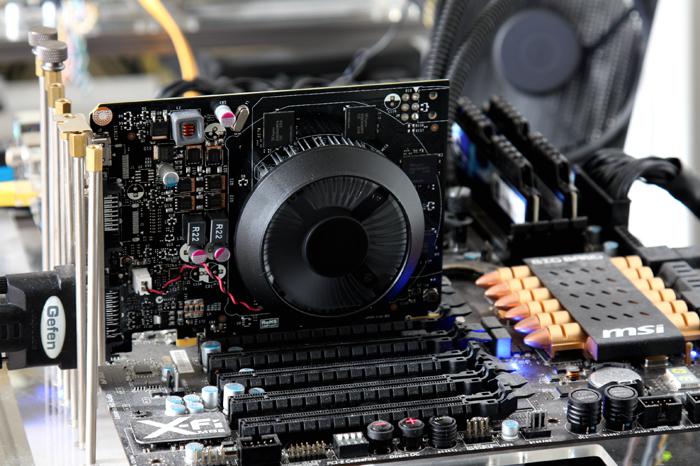Final words and conclusion
Final Words & Conclusion
Both the GeForce GTX 750 and 750 Ti are fun products anno 2014, though admittedly I like the 750 Ti the best by far. I do have to say this though, the graphics cards manufacturers are falling into the same repetitive cycle over and over again and as such these products are more of the same. Basically you will receive a small speed bump over the last-gen technology, but that's it. I mean, the chip and the looks might be different but in essence the GeForce GTX 750 and GeForce GTX 750 Ti are matching performance levels we have seen over and over again and that will prevent many consumers from upgrading. The greatest and most impressive benefit of this card is the low energy consumption, but that alone will not be enough for people to upgrade. So overall, the gain is that within its price level the performance went up a notch, and the power consumption down a little.
Performance
With the reference cards having a base-clock hovering at 1020 MHz you will be able to play games with the GTX 750 up-to 1600x1200 really well. 1080P is possible as well as long as you do not opt for freaky image quality settings or the most demanding games. The Ti version on its end is a reasonably nice 1080P card that offers pretty solid framerates at those resolutions. But you again can't go wild on image quality settings, but it sure is a capable performer for the money.
Cooling
As you have been able to see in our test sessions, the cooler does its job really well. The NVIDIA reference coolers overall are great, but they follow the temperature target of 80 degrees C. Both cards are below that number though. If you purchase a reference design product then do not worry about cooling and noise, the product is virtually silent even under hefty game stress. While it is stressed it will keep that GPU under 60 Degrees C as well so these are nice figures.
Power Consumption
Typically high clock frequencies have an adverse effect on your power consumption, but at 28nm and a more energy friendly Maxwell GPU, these cards do not need a lot of voltage. So the product when it's stressed only consumes give or take 75 to 95 Watts for factory higher clocked products that the AIB and AIC partners are bound to release. In idle mode (desktop) that number is as low as 5 Watts.
Overclocking
Both cards in most scenarios can be tweaked a little, the power limiter is maxed out, however a good 100 MHz extra on the GPU core frequency for both cards will not be an issue. This will bring the core clock above 1100 MHz, and you'll see the card boosting even over 1300 MHz, this was interesting to see. Memory wise both cards will pass 6 Gbps quite easily, and with the 128-bit memory bus being a limiting factor, overclocking on the memory will get you extra performance alright. Overall you'll gain another 10% in performance if you manage to do your tweaking right and if the card allows it of course. Drivers wise we can't complain at all, we did not stumble into any issues.
Final Words
The GTX 750 is an okay card, but if you are on a limited budget then the 750 Ti really is what you want to purchase as it has that little extra bite in performance. The 128-bit memory bus however limits the graphics memory bandwidth these cards really need. And that shows in performance. You, as a consumer, will have to forfeit on image quality settings to make the modern games perform well enough at a monitor resolution of 1920x1080. The cards will run with good image quality settings up-to 1600x1200, after that resolution you'll find yourself making compromises on image quality in order to gain in rendering performance. The cards are versatile and progressive when it comes to features and options.
That cooler works well, the product is silent and the GPU remains at fairly low temperatures. If cards like those tested today meet your maximum budget then we can certainly give them a recommendation. But truth be told, if you are purchasing a dedicated graphics card with the sole intent of gaming at HD resolutions, then really my recommendation remains the GeForce GTX 760 or better. On the competition's side, AMD pulled a fast one by releasing the R7-265 which really is a Radeon HD 7850 in disguise at a very fair 150 USD. Be sure to check that one out as overall it'll be faster (unless you opt factory overclocked products). But energy consumption wise the GTX 750 series will be hard to beat.
Pricing as it stands right now is:
- GTX 750 - EUR 92,00
- GTX 750 Ti - EUR 115,00
Recommended Downloads
- Sign up to receive a notice when we publish a new article
- Or go back to Guru3D's front page



